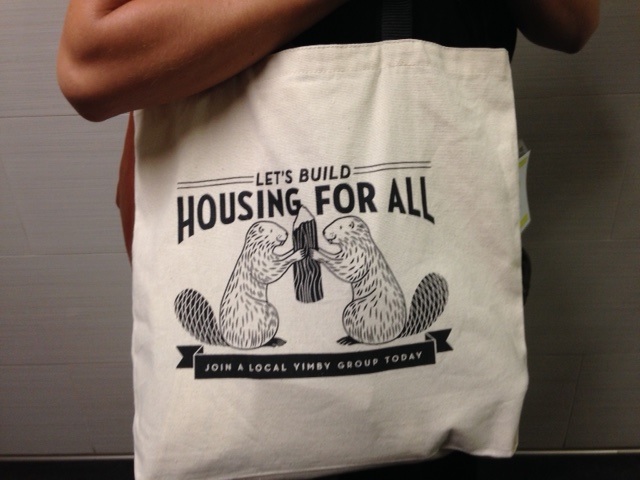
It is not a good week for the Yimby argument.
In a series of reports, studies, and articles, the claim that building more housing for rich people will bring down prices as been challenged, if not debunked. The new evidence suggests that the only falling rents are at the very top of the scale – for the rest of us, that new housing is not bringing any relief at all.

From The Washington Post:
Nationally, the pace of rent increases is beginning to slow down, with the average rent in at least six cities falling since last summer, according to Zillow data.
But the decline is being driven primarily by decreasing prices for high-end rentals. People in low-end housing, the apartments and other units that house working-class residents, are still paying more than ever.
More:
“For-profit developers have predominantly built for the luxury and higher end of the market, leaving a glut of overpriced apartments in some cities,” said Diane Yentel, president and chief executive of the National Low Income Housing Coalition, an advocacy group. “Some decision-makers believed this would ‘filter down’ to the lowest income people, but it clearly will not meet their needs.”
This really shouldn’t come as a surprise. We have seen a considerable amount of new luxury housing built in San Francisco – but the demand for that housing, both from wealthy people who want to live here and from wealthy people who just want a place to park their money– is close to insatiable.
And none of that new supply is trickling down to make prices at the lower end stabilize.
In fact, Forbes – which used to use “Capitalist Tool” as an ad slogan – now reports on a recent study by the Division of Research and Statistics and Monetary Affairs of the Federal Reserve Board, which is hardly a socialist organization, and its conclusion is clear:
The private market isn’t going to solve this problem. The notion that more supply will automatically decrease costs
relies on the most elementary and simplistic of teachings from economics, which, as anything in engineering or science, must radically simplify constraints and conditions to address any question. Too much complexity prevents manageable solutions.
A Federal Reserve published report from earlier this year looks at the notion of marginal additions to housing and finds that they’re unlikely to help. Prices will march on as they have.
The report looked at the price elasticity of rent, and the researchers developed a detailed model to determine how well housing markets in major cities resemble the simplistic economic theories that the Yimbys are promoting.
“Elasticity” is a term economists use to look at how many customers you lose if you raise the price of an item. Price elasticity of demand for, say, home heating oil in a freezing winter is pretty low; raise prices and people still have to buy it. (It seems, Forbes notes, that the same goes for I-Phones; no matter how much they cost, people still buy them.)
Commodities that can be easily substituted are much more price elastic. A shortage of beef that leads to higher prices will convince people to buy chicken (or tofu) instead.
None of this is an exact science, but there are visible trends over large populations and large amounts of time.
And what the Fed researchers found is that rent is relatively inelastic based on supply. You can build a whole lot more market-rate housing, and rents won’t come down much at all:
The implication of this finding is that even if a city were able to ease some supply constraints to achieve a marginal increase in its housing stock, the city will not experience a meaningful reduction in rental burdens.
The fed writers suggest that if we made “marginal” neighborhoods more attractive – the Richard Florida approach – we might find more of a substitution effect – but that’s just what Forbes calls “a cascading gentrification engine.”
Which is what the director of New York’s City Planning Department admitted to five years ago– the city kept building housing, and prices didn’t come down:
I had believed that if we kept building in that manner and increasing our housing supply … that prices would go down,” Burden said. “We had every year almost 30,000 permits for housing, and we built a tremendous amount of housing, including affordable housing, either through incentives or through government funds. And the price of housing didn’t go down at all.
Part of this, the academics note, is due to the basic contradiction in the theory of how housing markets work. If you assume more supply means lower prices, you ignore the fact that supply is driven not by demand but by the availability of investment capital, which is now entirely international and speculative.
If prices come down, the return on investment declines – and the capital for new housing starts to dry up as that money finds other, more profitable, places to go.
That’s why there are researchers who are talking about fundamentally changing housing markets in this country, and shifting the discussion away from market-based solutions and toward “social housing.”
This paper is a fascinating example. It argues that “large scale municipal housing, built and owned by the state, is by far the best option for solving the affordability crisis.”
Public housing doesn’t have the best record in this city (or, in general, in this country) for a lot of reasons, including the fact that politicians haven’t wanted to put resources into it.
But that’s not the only option. If you set aside Midtown, which is a unique situation, I don’t think there is a badly managed nonprofit affordable housing project anywhere in the city. The model of community-based organizations building housing with public money has worked amazingly well; there just hasn’t been enough money to fill the need.
And now the Chamber of Commerce – and by implication from this story, the San Francisco Chronicle – says that a tax on the biggest corporations in town to build supportive housing and get homeless people off the streets will destroy middle-class jobs.
I have a question for the chamber (in fact, I emailed it to their chief policy person, Jim Lazarus, who has not responded):
If you accept that resolving homelessness is going to be expensive, and that the state and feds aren’t going to help much, how would the Chamber suggest raising that money?
The community alternative is a tax on the biggest businesses in the city. You don’t like that? What’s your alternative?
Still waiting to hear.


